Shaft flex is one of those topics that can be quite confusing for many golfers. It seems that there are as many opinions on the topic as there are different shafts. Does shaft flex really matter? We wanted to approach the question a little bit differently.
In this video, we explain how the shaft in your driver can either be helping or hurting one key element of your drives.
- LIKE75
- LEGIT12
- WOW5
- LOL2
- IDHT5
- FLOP5
- OB2
- SHANK37
19th Hole
Vincenzi’s 2024 Wells Fargo Championship betting preview: Tommy Fleetwood ready to finally land maiden PGA Tour title

The PGA Tour season ramps back up this week for another “signature event,” as golf fans look forward to the year’s second major championship next week.
After two weaker-field events in the Zurich Classic and the CJ Cup Byron Nelson, most of the best players in the world will head to historic Quail Hollow for one of the best non-major tournaments of the year.
Last season, Wyndham Clark won the event by four shots.
Quail Hollow is a par-71 measuring 7,521 yards that features Bermudagrass greens. The tree-lined, parkland style course can play quite difficult and features one of the most difficult three-hole stretches in golf known as “The Green Mile,” which makes up holes 16-18: two mammoth par 4s and a 221-yard par 3. All three holes have an average score over par, and water is in play in each of the last five holes on the course.
The field is excellent this week with 68 golfers teeing it up without a cut. All of the golfers who’ve qualified are set to tee it up, with the exception of Scottie Scheffler, who is expecting the birth of his first child.
Past Winners at Quail Hollow
- 2023: Wyndham Clark (-19)
- 2022: Max Homa (-8)
- 2021: Rory McIlroy (-10)
- 2019: Max Homa (-15)
- 2018: Jason Day (-12)
- 2017: Justin Thomas (-8) (PGA Championship)
- 2016: James Hahn (-9)
- 2015: Rory McIlroy (-21)
Key Stats For Quail Hollow
Strokes Gained: Approach
Strokes gained: Approach will be extremely important this week as second shots at Quail Hollow can be very difficult.
Total SG: Approach Over Past 24 Rounds
- Akshay Bhatia (+1.16)
- Tom Hoge (+1.12)
- Corey Conners (+1.01)
- Shane Lowry (+0.93)
- Austin Eckroat (+0.82)
Strokes Gained: Off the Tee
Quail Hollow is a long course on which it is important to play from the fairway. Both distance and accuracy are important, as shorter tee shots will result in approach shots from 200 or more yards. With most of the holes heavily tree lined, errant drives will create some real trouble for the players.
Strokes Gained: Off the Tee Past 24 Rounds:
- Ludvig Aberg (+0.73)
- Rory McIlroy (+0.69)
- Xander Schauffele (+0.62)
- Viktor Hovland (+0.58)
- Chris Kirk (+0.52)
Proximity: 175-200
The 175-200 range is key at Quail Hollow. Players who can hit their long irons well will rise to the top of the leaderboard.
Proximity: 175-200+ over past 24 rounds:
- Cameron Young (28’2″)
- Akshay Bhatia (29’6″)
- Ludvig Aberg (+30’6″)
- Sam Burns (+30’6″)
- Collin Morikawa (+30’9″)
SG: Total on Tom Fazio Designs
Players who thrive on Tom Fazio designs get a bump for me at Quail Hollow this week.
SG: Total on Tom Fazio Designs over past 36 rounds:
- Patrick Cantlay (+2.10)
- Rory McIlroy (+1.95)
- Tommy Fleetwood (+1.68)
- Austin Eckroat (+1.60)
- Will Zalatoris (+1.57)
Strokes Gained: Putting (Bermudagrass)
Strokes Gained: Putting has historically graded out as the most important statistic at Quail Hollow. While it isn’t always predictable, I do want to have it in the model to bump up golfers who prefer to putt on Bermudagrass.
Strokes Gained: Putting (Bermudagrass) Over Past 24 Rounds:
- Taylor Moore (+0.82)
- Nick Dunlap (+.76)
- Wyndham Clark (+.69)
- Emiliano Grillo (+.64)
- Cam Davis (+.61)
Course History
This stat will incorporate players that have played well in the past at Quail Hollow.
Course History over past 36 rounds (per round):
- Rory McIlroy (+2.50)
- Justin Thomas (+1.96)
- Jason Day (+1.92)
- Rickie Fowler (+1.83)
- Viktor Hovland (+1.78)
Wells Fargo Championship Model Rankings
Below, I’ve compiled overall model rankings using a combination of the five key statistical categories previously discussed — SG: Approach (27%), SG: Off the Tee (23%), SG: Total on Fazio designs (12%), Proximity: 175-200 (12%), SG: Putting Bermuda grass (12%), and Course History (14%).
- Wyndham Clark
- Rory McIlroy
- Xander Schauffele
- Shane Lowry
- Hideki Matsuyama
- Viktor Hovland
- Cameron Young
- Austin Eckroat
- Byeong Hun An
- Justin Thomas
2024 Wells Fargo Championship Picks
Tommy Fleetwood +2500 (DraftKings)
I know many out there have Tommy fatigue when it comes to betting, which is completely understandable given his lack of ability to win on the PGA Tour thus far in his career. However, history has shown us that players with Fleetwood’s talent eventually break though, and I believe for Tommy, it’s just a matter of time.
Fleetwood has been excellent on Tom Fazio designs. Over his past 36 rounds, he ranks 3rd in the field in Strokes Gained: Total on Fazio tracks. He’s also been incredibly reliable off the tee this season. He’s gained strokes in the category in eight of his past nine starts, including at The Masters, the PLAYERS and the three “signature events” of the season. Tommy is a golfer built for tougher courses and can grind it out in difficult conditions.
Last year, Fleetwood was the first-round leader at this event, firing a Thursday 65. He finished the event in a tie for 5th place.
For those worried about Fleetwood’s disappointing start his last time out at Harbour Town, he’s bounced back nicely after plenty of poor outings this season. His T7 at the Valero Texas Open was after a MC and T35 in his prior two starts and his win at the Dubai Invitational came after a T47 at the Sentry.
I expect Tommy to bounce back this week and contend at Quail Hollow.
Justin Thomas +3000 (DraftKings)
It’s been a rough couple of years for Justin Thomas, but I don’t believe things are quite as bad as they seem for JT. He got caught in the bad side of the draw at Augusta for last month’s Masters and has gained strokes on approach in seven of his nine starts in 2024.
Thomas may have found something in his most recent start at the RBC Heritage. He finished T5 at a course that he isn’t the best fit for on paper. He also finally got the putter working and ranked 15th in Strokes Gained: Putting for the week.
The two-time PGA champion captured the first of his two major championships at Quail Hollow back in 2017, and some good vibes from the course may be enough to get JT out of his slump.
Thomas hasn’t won an event in just about two years. However, I still believe that will change soon as he’s been one of the most prolific winners throughout his PGA Tour career. Since 2015, he has 15 PGA Tour wins.
Course history is pretty sticky at Quail Hollow, with players who like the course playing well there on a regular basis. In addition to JT’s PGA Championship win in 2017, he went 4-1 at the 2022 Presidents Cup and finished T14 at the event last year despite being in poor form. Thomas can return as one of the top players on the PGA Tour with a win at a “signature event” this week.
Cameron Young +3500 (DraftKings)
For many golf bettors, it’s been frustrating backing Cam Young this season. His talent is undeniable, and one of the best and most consistent performers on the PGA Tour. He just hasn’t broken through with a victory yet. Quail Hollow has been a great place for elite players to get their first victory. Rory McIlroy, Anthony Kim, Rickie Fowler and Wyndham Clark all notched their first PGA Tour win at Quail.
Throughout Cam Young’s career, he has thrived at tougher courses with strong fields. This season, he finished T16 at Riviera and T9 at Augusta National, demonstrating his preference of a tough test. His ability to hit the ball long and straight off the tee make him an ideal fit for Quail Hollow, despite playing pretty poorly his first time out in 2023 (T59). Young should be comfortable playing in the region as he played his college golf at Wake Forest, which is about an hour’s drive from Quail Hollow.
The 26-year-old has played well at Tom Fazio designs in the past and ranks 8th in the field in Strokes Gained: Total on those courses in his last 36 rounds. Perhaps most importantly, this season, Young is the best player on the PGA Tour in terms of proximity from 175-200 in the fairway, which is where a plurality and many crucial shots will come from this week.
Young is an elite talent and Quail Hollow has been kind to players of his ilk who’ve yet to win on Tour.
Byeong Hun An +5000 (FanDuel)
Byeong Hun An missed some opportunities last weekend at the CJ Cup Byron Nelson. He finished T4 and played some outstanding golf, but a couple of missed short putts prevented him from getting to the winning score of -23. Despite not getting the win, it’s hard to view An’s performance as anything other than an overwhelming success. It was An’s fourth top-ten finish of the season.
Last week, An gained 6.5 strokes ball striking, which was 7th in the field. He also ranked 12th for Strokes Gained: Approach and 13th for Strokes Gained: Off the Tee. The South Korean has been hitting the ball so well from tee to green all season long and he now heads to a golf course that should reward his precision.
An’s driver and long irons are absolute weapons. At Quail Hollow, players will see plenty of approach shots from the 175-200 range as well as some from 200+. In his past 24 rounds, Ben ranks 3rd in the field in proximity from 175-200 and 12th in proximity from 200+. Playing in an event that will not end up being a “birdie” fest should help An, who can separate from the field with his strong tee to green play. The putter may not always cooperate but getting to -15 is much easier than getting to -23 for elite ball strikers who tend to struggle on the greens.
Winning a “signature event” feels like a tall task for An this week with so many elite players in the field. However, he’s finished T16 at the Genesis Invitational, T16 at The Masters and T8 at the Arnold Palmer Invitational. The 32-year-old’s game has improved drastically this season and I believe he’s ready to get the biggest win of his career.
- LIKE7
- LEGIT2
- WOW0
- LOL0
- IDHT0
- FLOP0
- OB0
- SHANK0
19th Hole
Vincenzi’s LIV Golf Singapore betting preview: Course specialist ready to thrive once again

After another strong showing in Australia, LIV Golf will head to Sentosa Golf Club in Singapore looking to build off of what was undoubtedly their best event to date.
Sentosa Golf Club sits on the southern tip of Singapore and is one of the most beautiful courses in the world. The course is more than just incredible scenically; it was also rated 55th in Golf Digest’s top-100 courses in 2022-2023 and has been consistently regarded as one of the best courses in Asia. Prior to being part of the LIV rotation, the course hosted the Singapore Open every year since 2005.
Sentosa Golf Club is a par 71 measuring 7,406 yards. The course will require precise ball striking and some length off the tee. It’s possible to go low due to the pristine conditions, but there are also plenty of hazards and difficult spots on the course that can bring double bogey into play in a hurry. The Bermudagrass greens are perfectly manicured, and the course has spent millions on the sub-air system to keep the greens rolling fast. I spoke to Asian Tour player, Travis Smyth, who described the greens as “the best [he’s] ever played.”
Davis Love III, who competed in a Singapore Open in 2019, also gushed over the condition of the golf course.
“I love the greens. They are fabulous,” the 21-time PGA Tour winner said.
Love III also spoke about other aspects of the golf course.
“The greens are great; the fairways are perfect. It is a wonderful course, and it’s tricky off the tee.”
“It’s a long golf course, and you get some long iron shots. It takes somebody hitting it great to hit every green even though they are big.”
As Love III said, the course can be difficult off the tee due to the length of the course and the trouble looming around every corner. It will take a terrific ball striking week to win at Sentosa Golf Club.
In his pre-tournament press conference last season, Phil Mickelson echoed many of the same sentiments.
“To play Sentosa effectively, you’re going to have a lot of shots from 160 to 210, a lot of full 6-, 7-, 8-iron shots, and you need to hit those really well and you need to drive the ball well.”
Golfers who excel from tee to green and can dial in their longer irons will have a massive advantage this week.
Stat Leaders at LIV Golf Adelaide:
Fairways Hit
1.) Louis Oosthuizen
2.) Anirban Lahiri
3.) Jon Rahm
4.) Brendan Steele
5.) Cameron Tringale
Greens in Regulation
1.) Brooks Koepka
2.) Brendan Steele
3.) Dean Burmester
4.) Cameron Tringale
5.) Anirban Lahiri
Birdies Made
1.) Brendan Steele
2.) Dean Burmester
3.) Thomas Pieters
4.) Patrick Reed
5.) Carlos Ortiz
LIV Golf Individual Standings:
1.) Joaquin Niemann
2.) Jon Rahm
3.) Dean Burmester
4.) Louis Oosthuizen
5.) Abraham Ancer
LIV Golf Team Standings:
1.) Crushers
2.) Legion XIII
3.) Torque
4.) Stinger GC
5.) Ripper GC
LIV Golf Singapore Picks
Sergio Garcia +3000 (DraftKings)
Sergio Garcia is no stranger to Sentosa Golf Club. The Spaniard won the Singapore Open in 2018 by five strokes and lost in a playoff at LIV Singapore last year to scorching hot Talor Gooch. Looking at the course setup, it’s no surprise that a player like Sergio has played incredible golf here. He’s long off the tee and is one of the better long iron players in the world when he’s in form. Garcia is also statistically a much better putter on Bermudagrass than he is on other putting surfaces. He’s putt extremely well on Sentosa’s incredibly pure green complexes.
This season, Garcia has two runner-up finishes, both of them being playoff losses. Both El Camaleon and Doral are courses he’s had success at in his career. The Spaniard is a player who plays well at his tracks, and Sentosa is one of them. I believe Sergio will get himself in the mix this week. Hopefully the third time is a charm in Singapore.
Paul Casey +3300 (FanDuel)
Paul Casey is in the midst of one of his best seasons in the five years or so. The results recently have been up and down, but he’s shown that when he’s on a golf course that suits his game, he’s amongst the contenders.
This season, Casey has finishes of T5 (LIV Las Vegas), T2 (LIV Hong Kong), and a 6th at the Singapore Classic on the DP World Tour. At his best, the Englishman is one of the best long iron players in the world, which makes him a strong fit for Sentosa. Despite being in poor form last season, he was able to fire a Sunday 63, which shows he can low here at the course.
It’s been three years since Casey has won a tournament (Omega Dubai Desert Classic in 2021), but he’s been one of the top players on LIV this season and I think he can get it done at some point this season.
Mito Pereira +5000 (Bet365)
Since Mito Pereira’s unfortunate demise at the 2022 PGA Championship, he’s been extremely inconsistent. However, over the past few months, the Chilean has played well on the International Series as well as his most recent LIV start. Mito finished 8th at LIV Adelaide, which was his best LIV finish this season.
Last year, Pereira finished 5th at LIV Singapore, shooting fantastic rounds of 67-66-66. It makes sense why Mito would like Sentosa, as preeminent ball strikers tend to rise to the challenge of the golf course. He’s a great long iron player who is long and straight off the tee.
Mito has some experience playing in Asia and is one of the most talented players on LIV who’s yet to get in the winner’s circle. I have questions about whether or not he can come through once in contention, but if he gets there, I’m happy to roll the dice.
Andy Ogletree +15000 (DraftKings)
Andy Ogletree is a player I expected to have a strong 2024 but struggled early in his first full season on LIV. After failing to crack the top-25 in any LIV event this year, the former U.S. Amateur champion finally figured things out, finished in a tie for 3rd at LIV Adelaide.
Ogletree should be incredible comfortable playing in Singapore. He won the International Series Qatar last year and finished T3 at the International Series Singapore. The 26-year-old was arguably the best player on the Asian Tour in 2023 and has been fantastic in the continent over the past 18 months.
If Ogletree has indeed found form, he looks to be an amazing value at triple-digit odds.
- LIKE3
- LEGIT3
- WOW1
- LOL2
- IDHT0
- FLOP2
- OB0
- SHANK0
Opinion & Analysis
Ryan: Lessons from the worst golf instructor in America
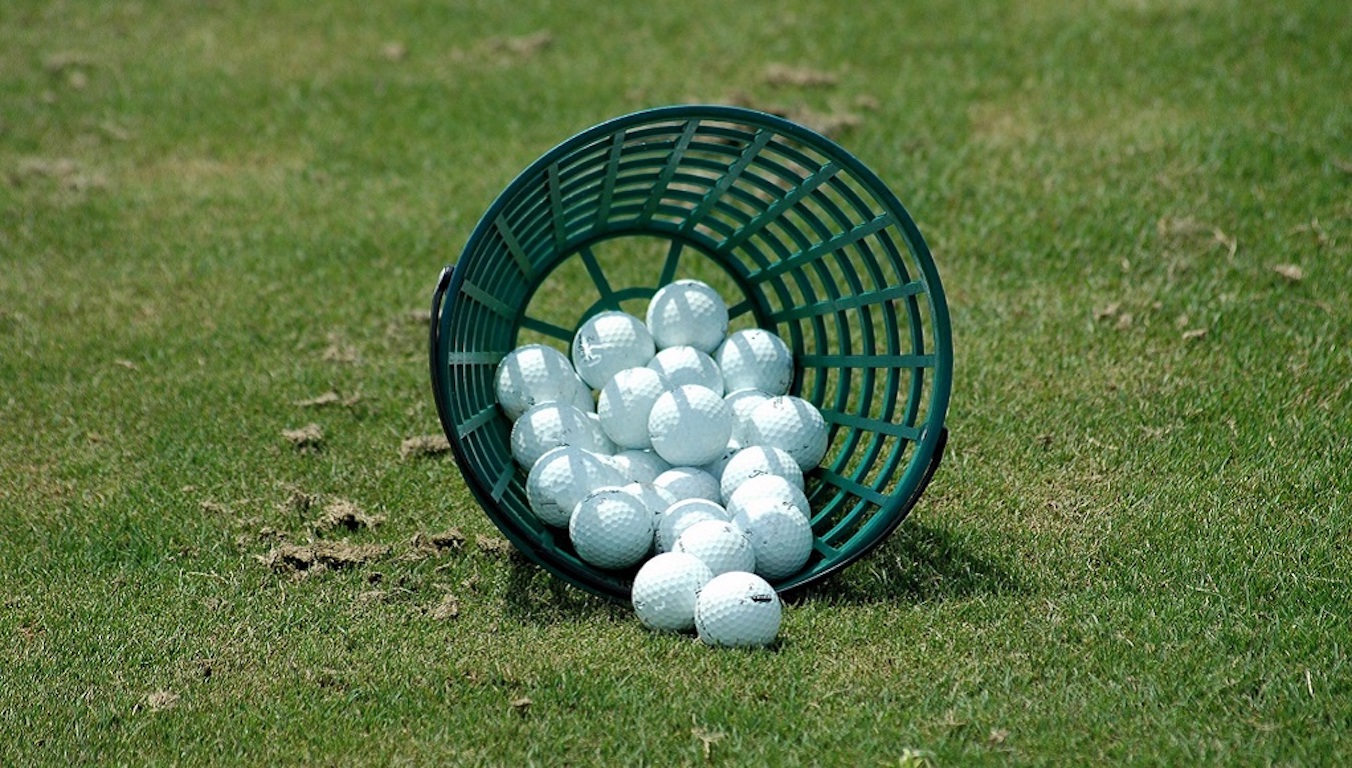
In Tampa, there is a golf course that boasts carts that do not work, a water range, and a group of players none of which have any chance to break 80. The course is overseen by a staff of crusty men who have succeeded at nothing in life but ending up at the worst-run course in America. However, this place is no failure. With several other local courses going out of business — and boasting outstanding greens — the place is booked full.
While I came for the great greens, I stayed to watch our resident instructor; a poor-tempered, method teacher who caters to the hopeless. At first, it was simply hilarious. However, after months of listening and watching, something clicked. I realized I had a front-row seat to the worst golf instructor in America.
Here are some of my key takeaways.
Method Teacher
It is widely accepted that there are three types of golf instructors: system teachers, non-system teachers, and method teachers. Method teachers prescribe the same antidote for each student based on a preamble which teachers can learn in a couple day certification.
Method teaching allows anyone to be certified. This process caters to the lowest caliber instructor, creating the illusion of competency. This empowers these underqualified instructors with the moniker of “certified” to prey on the innocent and uninformed.
The Cult of Stack and Jilt
The Stack and Tilt website proudly boasts, “A golfer swings his hands inward in the backswing as opposed to straight back to 1) create power, similar to a field goal kicker moving his leg in an arc and 2) to promote a swing that is in-to-out, which produces a draw (and eliminates a slice).”
Now, let me tell you something, there is this law of the universe which says “energy can either be created or destroyed,” so either these guys are defying physics or they have no idea what they are taking about. Further, the idea that the first move of the backswing determines impact is conjecture with a splash of utter fantasy.
These are the pontifications of a method — a set of prescriptions applied to everyone with the hope of some success through the placebo effect. It is one thing for a naive student to believe, for a golf instructor to drink and then dispel this Kool-Aid is malpractice.
Fooled by Randomness
In flipping a coin, or even a March Madness bet, there is a 50-50 chance of success. In golf, especially for new players, results are asymmetric. Simply put: Anything can happen. The problem is that when bad instructors work with high handicappers, each and every shot gets its own diagnosis and prescription. Soon the student is overwhelmed.
Now here’s the sinister thing: The overwhelming information is by design. In this case, the coach is not trying to make you better, they are trying to make you reliant on them for information. A quasi Stockholm syndrome of codependency.
Practice
One of the most important scientists of the 20th century was Ivan Pavlov. As you might recall, he found that animals, including humans, could be conditioned into biological responses. In golf, the idea of practice has made millions of hackers salivate that they are one lesson or practice session from “the secret.”
Sunk Cost
The idea for the worst golf instructor is to create control and dependency so that clients ignore the sunk cost of not getting better. Instead, they are held hostage by the idea that they are one lesson or tip away from unlocking their potential.
Cliches
Cliches have the effect of terminating thoughts. However, they are the weapon of choice for this instructor. Add some hyperbole and students actually get no information. As a result, these players couldn’t play golf. When they did, they had no real scheme. With no idea what they are doing, they would descend into a spiral of no idea what to do, bad results, lower confidence, and running back to the lesson tee from more cliches.
The fact is that poor instruction is about conditioning players to become reliant members of your cult. To take away autonomy. To use practice as a form of control. To sell more golf lessons not by making people better but through the guise that without the teacher, the student can never reach their full potential. All under the umbrella of being “certified” (in a 2-day course!) and a melee of cliches.
This of course is not just happening at my muni but is a systemic problem around the country and around the world, the consequences of which are giving people a great reason to stop playing golf. But hey, at least it’s selling a lot of golf balls…
- LIKE19
- LEGIT2
- WOW0
- LOL4
- IDHT1
- FLOP4
- OB1
- SHANK25
-
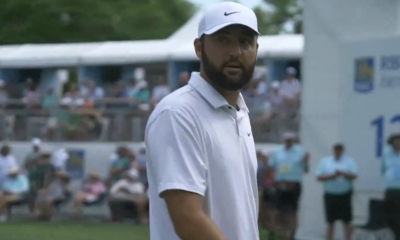
 19th Hole2 weeks ago
19th Hole2 weeks agoJustin Thomas on the equipment choice of Scottie Scheffler that he thinks is ‘weird’
-
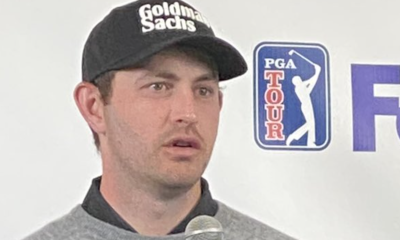
 19th Hole2 weeks ago
19th Hole2 weeks ago‘Absolutely crazy’ – Major champ lays into Patrick Cantlay over his decision on final hole of RBC Heritage
-
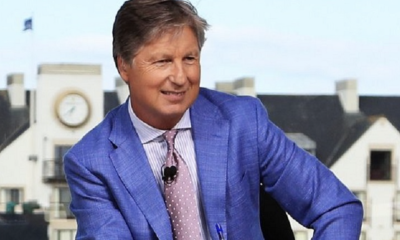
 19th Hole3 weeks ago
19th Hole3 weeks agoBrandel Chamblee has ‘no doubt’ who started the McIlroy/LIV rumor and why
-
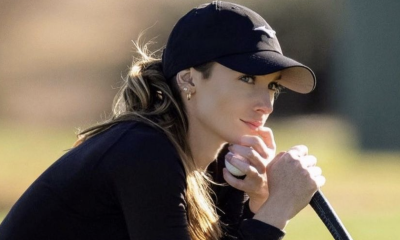
 19th Hole2 weeks ago
19th Hole2 weeks agoLET pro gives detailed financial breakdown of first week on tour…and the net result may shock you
-
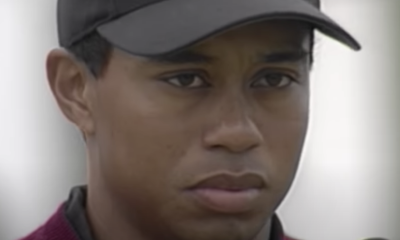
 19th Hole7 days ago
19th Hole7 days agoGary Player claims this is what ‘completely ruined’ Tiger Woods’ career
-
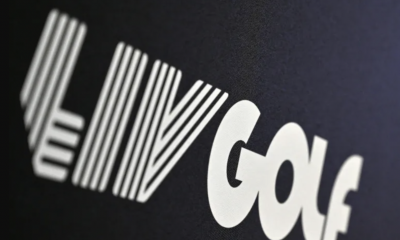
 19th Hole14 hours ago
19th Hole14 hours agoReport: LIV star turns down PGA Championship invite due to ‘personal commitments’
-
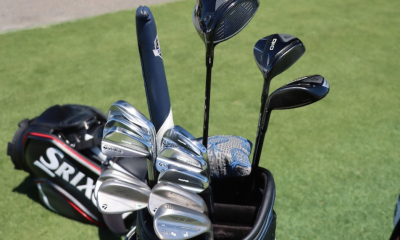
 Whats in the Bag1 week ago
Whats in the Bag1 week agoTeam McIlowry (Rory McIlroy, Shane Lowry) winning WITBs: 2024 Zurich Classic
-
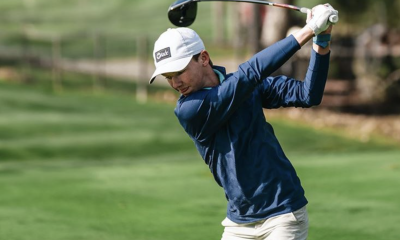
 19th Hole3 weeks ago
19th Hole3 weeks agoTaylorMade signs 15-year-old AJGA Rolex Junior Player of the Year to an NIL contract







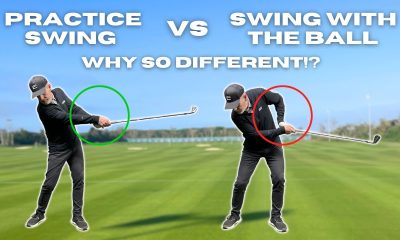



Dr. Golf
Feb 13, 2018 at 7:00 pm
Seven Dreams $1200 autoclave cured driver shafts are superior to the oven cured shafts because they suck out the excessive epoxy plastic that causes graphite shafts to be floppy and soggy in tip dynamic action and recovery.
Steel shafts are still the gold standard for shaft consistency. Soon the debates about current graphite shafts will be moot as they are made obsolete by Seven Dreams graphite shafts.
Adam
Feb 12, 2018 at 1:17 pm
A little defined problem has to do with the radial consistency of a shaft. I would never use one that varies more than 1% hard to soft plane. Yet, I have wondered, even if I position the head so that it moves exactly along the soft plane at impact, it moved through other planes on its way to impact. So, the head is twisting and turning in odd ways before impact. That can’t be good.
AMG
Feb 12, 2018 at 8:08 pm
You’re right on the money, it’s not bending in a consistent plane. Not comforting, lol
Dr. Golf
Feb 13, 2018 at 6:53 pm
The radial consistency of steel shafts is uniform, whereas it’s all over the place for floppy soggy graphite shafts…. all because of the excessive epoxy plastic and arbitrary layering that compromises radial action.
$1200 Seven Dreams autoclave cured graphite shafts has superior radial consistency when compare to all the oven-cured shafts on the market now.
Josh
Feb 12, 2018 at 12:50 pm
The video achieved what it was meant to. It showed us that the shaft is not straight at impact, and flex has an effect on speed. We learned that having the right flex matters. The question posed, “Does shaft flex make a difference?” was answered. Thank you AMG.
AMG
Feb 12, 2018 at 7:15 pm
Thanks for watching!
Joro
Feb 12, 2018 at 12:46 pm
Having been in this business for over 60 yrs as a player, club maker and repairman, plus teaching I have found out no, not as much as the ego thinks.. Weight, flex, and length are not that much, of course the difference tween xx and R or reg.. is there, but between X and S, not much and of course the heavier the stiffer also. Knowing shafts, what the do and why is complicated, but not that difficult.
Now Graphite is a different matter because there are not standards, one makers reg flex is another makers s and it has to be tried to be sure you get what you want. Weight is also a bug factor that too light can be too fast and hard to control. So with Graphite you have to careful and get fitted, although the shaft you hit well may not be the same they put in your clubs. Like I said, it varies and not as consistent as steel, and that is just part of it.
AMG
Feb 12, 2018 at 7:14 pm
Great points, Joro. Always good to leave the fitting with what you just hit the best.
joe virdone
Feb 12, 2018 at 11:59 am
What were the clubhead speeds for the reg, stuff and X stiff demos…thanks.
AMG
Feb 12, 2018 at 7:12 pm
99, 106, 110, respectively.
Reeves
Feb 12, 2018 at 1:03 am
I find at my level (15) that shaft flex can make a lot of difference..went from stiff metal iron shafts to regular iron shaft (same brand on Ping irons) can now get 4 and 5 irons up in the air…also with the driver I went from a regular graphite shaft to a tour stiff (Wilson Triton driver) and picked up 20 yards and a small draw where the regular shaft was a constant baby fade….
TeeBone
Feb 10, 2018 at 11:24 am
I would like to have seen the final clubhead speed at impact numbers. There is other research that found that shaft flex had no significant impact on clubhead speed. Isn’t it possible to have different kick speeds with the same total speed?
AMG
Feb 10, 2018 at 4:10 pm
We posted the final head speeds in the comments section of the video. I don’t recall exactly what they were, but they’re in the comments if you’d like to see them.
Do you have a link you could share for that research? Would like to see how they did their tests.
I don’t think it would be possible to only vary kick speed while keeping total head speed the same. It would be possible to do if the other variables changed. BUT… we haven’t tested it, just a hunch.
TeeBone
Feb 11, 2018 at 11:37 am
Sasho MacKenzie has several papers on this. See also Milne and Davis. And David Williams’ book. And probably others as well.
AMG
Feb 11, 2018 at 4:47 pm
Thanks, TeeBone????
CB
Feb 10, 2018 at 9:13 am
Really informative stuff! Very clearly explained and simplified for anybody to understand. Thank you very much!
AMG
Feb 10, 2018 at 4:11 pm
Thanks for watching!
JE
Feb 10, 2018 at 6:00 am
Damn interesting stuff. Thank you!
AMG
Feb 10, 2018 at 4:12 pm
Thanks for watching, JE.
Chris
Feb 9, 2018 at 10:28 pm
If I knew nothing about golf and was trying to learn, this video would tell me that if I wanted to not lose Club Head speed with my 86mph driver swing, I need an x flex shaft.
OB
Feb 9, 2018 at 3:44 pm
True Temper scientist-engineers determined three distinct shaft loading profiles. Double peak, single peak and ramp-up swing-shaft loading. TT designed 5-iron and driver devices that monitored the stresses in the shaft, called ShaftLab. It worked well until one of the many internal load sensors failed and it malfunctioned. It was discontinued.
Nevertheless, ShaftLab defined swing loading profiles and shaft recommendations. What is shown in the video is slightly visually misleading because what we see as “deflection” is actually shaft tip droop and tip torque.
Face-on “dead straight” does not show full shaft droop and torque twist. What we see is the dynamic alignment of the shaft axis to the clubhead eccentric sweet spot location.
Shaft stiffness and droop is a function of swing speed. The clubhead “whipsnaps” through final release and into impact. If your swing speed is too low and your shaft is too stiff, it won’t droop and the reaction forces into your hands and arms are excessive.
95% of golfers worldwide should be playing a woman’s A-flex shaft to get adequate droop and whipsnap… something most golfers never feel because their swing isn’t synchronized to the dynamic action of the shaft tip section and clubhead.
It’s also why Tour and LD players have problems with inconsistent soggy floppy epoxy plastic graphite shafts. Steel shafts have the most consistent flex dynamics.
AMG
Feb 9, 2018 at 4:39 pm
GEARS captures both shaft deflection and droop separately. We show both sets of numbers for each shaft looked at in the video. These are not tip numbers, but overall numbers from the length of the shaft. But because the tip is the softest section of the shaft, more movement happens the closer down the shaft you look.
The purpose of this video was not to show anything other than shafts do not all produce the same results, and that shafts are not straight at impact.
If you really want to take a deep dive into all things deflection, drooping, and torque you would love the info from Fujikura’s Enso system. There is nothing else out there like it.
george
Feb 10, 2018 at 1:50 pm
When then there is a golf shaft for irons and woods that eliminates droop, twist
and kick at impact; why would we ask golfers to synchronize their golf swings to each shaft in their bag?
More droop, more twist and more kick make it impossible to time a solid impact on sweet spot, consistently.
When there isn’t a solid impact and ball flight is erratic, should the golfer change his swing or change his shaft or clubhead?
Its no wonder so many golfers quit this game.
Moe Norman and Ben Hogan would not play with ‘licorice’ sticks. No one should.
farmer
Feb 9, 2018 at 2:39 pm
There is no baseline information, other than the LD swing. Would be more informative if it was done on an Iron Byron, and captioned by various SS’s. Does not take into account the different flex patterns in shafts. So, nicely produced, but worthless.
AMG
Feb 9, 2018 at 4:47 pm
The problem for us using Iron Byron type robotics is that we work with real golfers and are much more interested in the human variances/influences on equipment. The OEM’s do a great job going down the robot testing road, we’re more interested in how the equipment works in the hands of a wide skill range of actual golfers.
We didn’t include the baseline info because it really wasn’t necessary to answer the questions of does shaft flex make a difference and are shafts straight at impact.
Steg0726
Feb 9, 2018 at 12:13 pm
Knowing the swing speeds and the other variables that involve the shaft loading and unloading needs to be present. Maybe adding info from a GC quad or even mizuno shaft optimizer would give some outlook on swing tendencies. Adding shaft specs as well.
AMG
Feb 9, 2018 at 4:52 pm
That information would absolutely be necessary to match a golfer to an optimally fit shaft. The questions we wanted to answer with this short video were way less ambitious.
Is there anything specifically regarding shafts that you’d like to see looked at?
george
Feb 10, 2018 at 11:43 am
I would like to see how much each type of shaft decelerates at impact (Newtons Third Law)
Jeff
Feb 9, 2018 at 11:03 am
How much does the golfer/ swing speed etc affect the results. Is the golfer that is swinging the x flex shaft more efficient??
Just curious how the golfer affected the results
Jack
Feb 9, 2018 at 11:20 am
different golfers, good/bad techniques, hard to come away with anything from this video
Skip
Feb 9, 2018 at 11:53 am
agreed. there’s too many variables to really come away with anything definitive. Is there an ideal reaction of the shaft? Watching this, this long drive guy should be playing the X-Flex instead of the XX?
george
Feb 9, 2018 at 3:32 pm
to eliminate some variables such as droop, kick, twist and gear effect
at the same time, try /test Nunchuk shafts
video at, nventix.com
AMG
Feb 9, 2018 at 5:10 pm
I doubt he’d be happy playing the X flex.
We weren’t attempting for optimally match shafts to swings – you’re right, the number of variables for that would be staggering. Instead, we wanted to show how shafts can and do perform differently (many believe they don’t) and that shafts are not straight rigid rods at impact.
Most highly informed golfers are not aware of how much a shaft can or does add/reduces speed to the overall motion. We thought that would be interesting to show as well.
Dan
Feb 9, 2018 at 4:59 pm
Are we to assume it was the same person with each shaft? If so then the video makes sense, if not complete nonsense.
AMG
Feb 9, 2018 at 5:02 pm
Very difficult to define efficient, but all 4 golfers are excellent players in their own class of skill level.
The golfer has a huge affect on any non-robot shaft testing. We have seen swing speeds from high 80’s all the way up produce both positive and negative kick speeds.
It’s interesting watching golfers respond to different shafts with strong feelings of love/hate, but with next to no fluctuations in the actual data. A “good feeling” shaft often trumps everything.